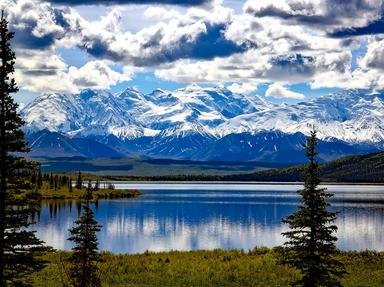Quiz Answer Key and Fun Facts
1. What major coastal city in southeastern Alaska is completely surrounded by mountains and water and can only be reached by boat or plane?
2. What national park is home to North America's tallest peak, rising 20,310 feet (6,190m), and features tundra, taiga forests, and vast wilderness?
3. Which city on the Bering Sea became famous during the gold rush of 1899 and now serves as the finish line for the Iditarod Trail Sled Dog Race?
4. Which chain of volcanic islands stretches westward from the Alaska Peninsula into the Pacific Ocean?
5. Which island, the largest in Alaska and second largest in the United States, lies off the southern coast?
6. Which port city on Prince William Sound was relocated after being destroyed in the 1964 earthquake and tsunami?
7. Which national forest, covering much of southeastern Alaska, includes the Inside Passage and is the largest national forest in the United States?
8. Which river flows from Canada through Alaska to the Bering Sea and played a key role in the Klondike Gold Rush?
9. Which city on Baranof Island (and part of Chichagof Island) was once the capital of Russian America before Alaska was sold to the United States in 1867?
10. Which large, shallow bay in western Alaska is famous for its salmon runs and fishing industry?
Source: Author
JJHorner
This quiz was reviewed by FunTrivia editor
agony before going online.
Any errors found in FunTrivia content are routinely corrected through our feedback system.
